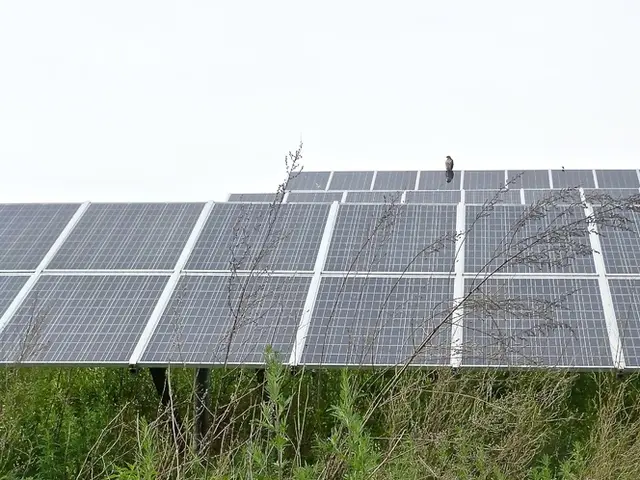Exploring the Prospects of Nature-Based Approaches and Blockchain Technology for Our Digital Platform
The global carbon credit market is undergoing a significant transformation, with a growing emphasis on transparency, fraud prevention, and remote verification. This shift is driven by the increasing adoption of blockchain technology, particularly in agriculture and forestry sectors.
In 2023, Europe retired 52.4 million carbon credits, following North America's lead with 66.8 million credits. Asia also joined the race, retiring 28.1 million credits, signalling growing participation in the carbon credit market. Notably, over 60% of new carbon credit platforms have embraced blockchain, aiming to enhance transparency, speed verification, and prevent double issuance.
Latin America and Africa are emerging as key suppliers of carbon credits, leveraging their vast forests and renewable energy resources to support offset projects. Europe remains the largest market for carbon credits, driven by its European Union Emissions Trading System (EU ETS).
However, the carbon credit market still faces hurdles. Proving that credits deliver real, lasting emission cuts and addressing fragmented regulations across regions are significant challenges. Another challenge is the energy consumption of certain blockchain protocols, particularly those relying on energy-intensive Proof of Work consensus.
Blockchain technology, however, offers a solution to these challenges. It ensures secure, immutable, and real-time tracking of carbon credit transactions, preventing fraud and greenwashing through transparent tokenization of credits. Blockchain enhances accountability and ESG transparency by creating unchangeable records of transactions and supply chain traceability. It also allows the creation of smart contracts to automate and optimize carbon credit exchanges in a decentralized manner.
Blockchain facilitates micro-credit trading, enabling smallholders and local environmental projects to participate in global carbon finance, expanding market inclusivity. It also supports evolving regulatory frameworks by promoting standards and uniformity globally.
Key trends in the carbon credit market include enhanced transparency and traceability, remote verification using IoT, AI, drones, nature-based solutions integration, DAO-driven community governance, micro-credit and fractional trading, and real-time supply chain tracking.
Asia Pacific is witnessing the fastest growth in the carbon credit market, particularly in China, South Korea, and Australia. Regulatory alignment, DAO-driven markets, remote verification, and micro-credit access are shaping up as trends in blockchain and carbon credit tracking.
Several organizations, including 3Degrees, South Pole Group, Finite Carbon, Terrapass, Moss.earth, Verra, Gold Standard, Xpansiv, and Pachama, are leading the development, verification, and trade of carbon credits. Blockchain technology could create new jobs in carbon accounting and analytics while making carbon credits more attractive to investors.
In summary, blockchain offers tangible improvements in transparency, efficiency, and inclusivity for the carbon credit market, while also facing challenges that require technical and regulatory solutions.
Read also:
- Industrial robots in China are being installed at a faster rate than in both the United States and the European Union, as the global market for these robots faces a downturn.
- Airbus is propelling the advancement in aviation fuel's environmental friendliness
- Sustainable initiatives boosted by Veolia through financially backed eco-friendly projects
- Potential perils of artificial intelligence data facilities to American electrical infrastructure due to fire hazards.








